Essential Oils and Health: A Comprehensive Guide to Unlocking the Healing Powers of Essential Oils
Welcome to our comprehensive guide on “Essential Oils and Health”!
Whether you’re seeking natural remedies, exploring alternative therapies, or simply curious about harnessing the power of nature for well-being, this guide is your roadmap to unlocking the immense potential of essential oils. Backed by scientific research, expert insights, and centuries of traditional use, we delve into the myriad ways essential oils can support your physical and mental health as well as increasing energy.
From relieving stress and boosting immunity to enhancing sleep and promoting skin health, our guide empowers you to make informed decisions and embark on a transformative journey towards a healthier, more balanced life. Get ready to discover the secrets of essential oils and embark on a path to holistic wellness!
It All Starts with the Essence
Essential oils, the highly concentrated extracts of plants, have been used for thousands of years for their aromatic and therapeutic properties. Each essential oil contains a unique blend of chemical constituents that give it its distinctive aroma and health benefits.
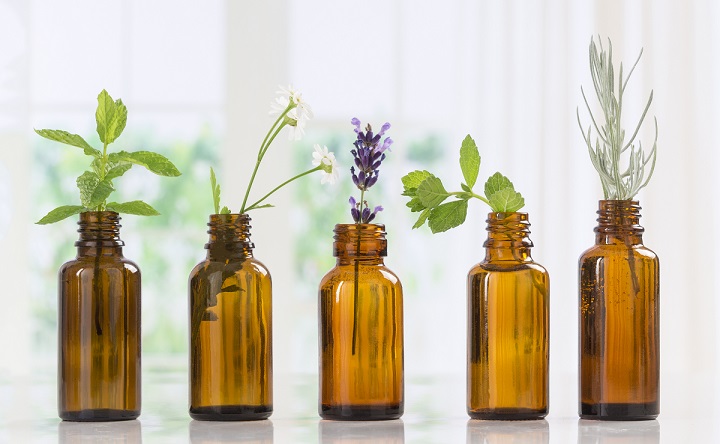
The use of essential oils dates back to ancient civilizations. For instance, the Egyptians were known for their knowledge of cosmetology, ointments, and aromatic oils. They used these oils for various purposes, including embalming, religious ceremonies, and personal beauty care. Similarly, in ancient Greece, Hippocrates, often referred to as the “father of medicine,” documented the effects of over 300 plants, many of which are still used in the production of oils today.
History Shall Be Our Guide
In traditional Chinese and Indian medicine, essential oils have also played a significant role. For example, in Ayurveda, the 5,000-year-old Indian system of natural healing, oils like frankincense, myrrh, and sandalwood have been used for their therapeutic grade properties.
In modern times, the use of essential oils has seen a resurgence, particularly within the fields of complementary and alternative medicine. Aromatherapy, the practice of using essential oil for therapeutic benefit, has become widely accepted and integrated into everyday health practices. For instance, lavender oil is often used in aromatherapy for its calming and relaxing effects and has been studied for its potential benefits in treating anxiety and insomnia.
| Essential Oil | Active Chemical Constituents | Symptom/Ailment Improved |
|---|---|---|
| Ginger | Gingerol, Zingiberene | Headaches, muscle pain |
| Oregano | Carvacrol, Thymol | Boosting immunity, reducing inflammation |
| Clove | Eugenol, Caryophyllene | Toothaches, muscle pain, antimicrobial |
| Frankincense | Alpha-pinene, Limonene | Relaxation, reducing anxiety |
| Vetiver | Sesquiterpenes | Stress reduction, relaxation |
| Lavender | Linalool, Linalyl Acetate | Linalool, Linalyl Acetate |
| Black Pepper | Piperine | Headaches, muscle pain |
| Cinnamon | Cinnamaldehyde | Warming effect, menstrual pain relief |
| Bergamot | Linalool, Limonene | Uplifting mood, reducing anxiety |
| Ylang-Ylang | Linalool, Geranyl Acetate | Mood enhancement, promoting relaxation |
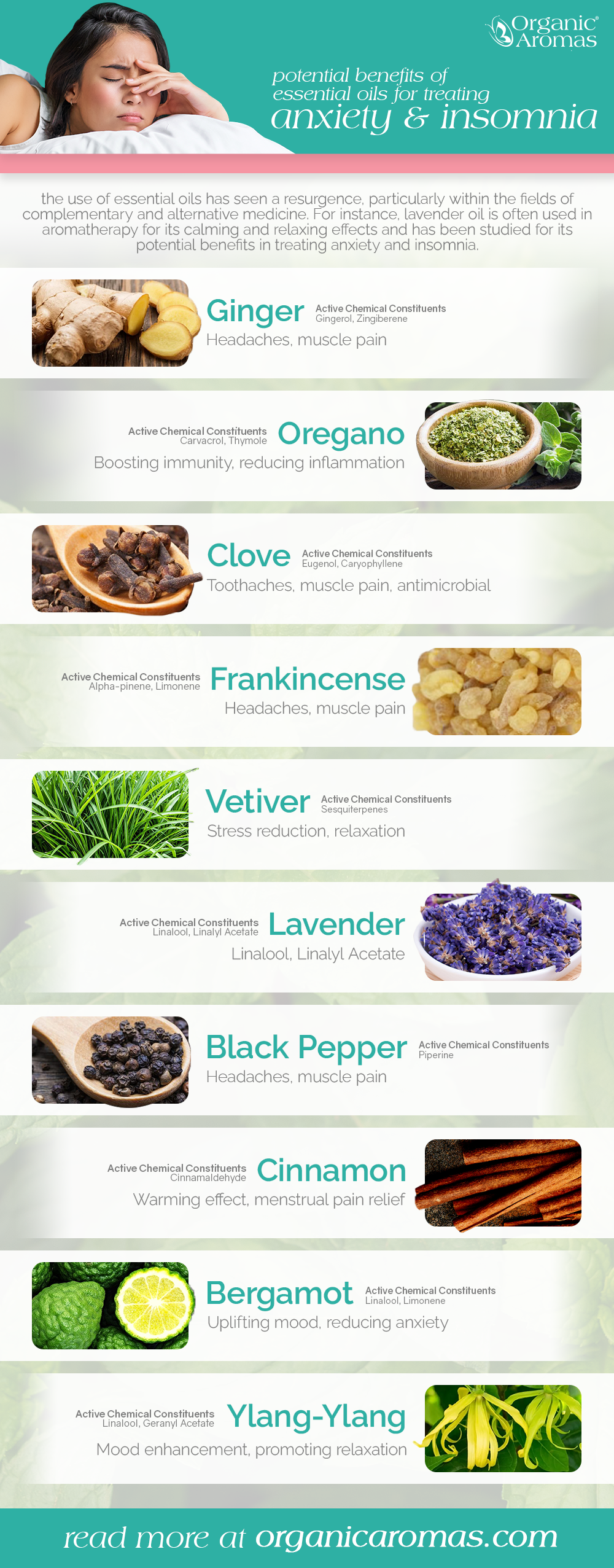
Some Good Examples with Hard Evidence
Peppermint essential oil, known for its invigorating scent, is used in aromatherapy for its potential to relieve headaches and muscle pain. It’s also used in topical creams and ointments for its cooling effect. In a study published in the “International Journal of Neuroscience,” peppermint oil was found to have a significant analgesic effect on headache when applied topically.
Tea tree oil, with its potent antifungal properties, is commonly used in skincare products to help combat acne and other skin conditions. A study published in the “Journal of Dermatological Sciences1” found that tea tree oil has a potential role in the treatment of psoriasis.
While more research is always needed, essential oils have been cited in the use of treating many heretofore unheard of applications, such as hospice and palliative care for cancer patients, Alzheimers sufferers, and for use in controlling appetite and heling with weight loss. Further work needs to be done on other potential use cases such as varicose veins, arthritis and improving symptoms of diabetes.
The Importance of Essential Oils and Health
Essential oils have gained popularity over recent years due to their potential therapeutic benefits for physical health like easing pain or supporting immune function but also mental health like reducing your stress and anxiety levels or promoting restful sleep. When used safely and correctly they can provide natural solutions for common ailments without relying on pharmaceuticals with unwanted side-effects or potential harms.
However, it’s important to know that while these natural remedies offer great promise they should never replace professional medical treatment especially if a condition is severe or worsening.
In addition, it is worth noting that quality is of utmost importance when it comes to essential oil. It is advisable to purchase organic and pure oils from reputable sources that do regular third-party testing to ensure safety and effectiveness.
Here we will explore how different types of essential oils work together to support our overall health both physically and mentally as well as how best we can use these potent plant extracts in a safe and effective manner.
The Science Behind Essential Oils

Essential oils are volatile compounds extracted from plants through processes such as steam distillation or cold pressing. The ‘essence’ of the plant’s fragrance, these oils are complex mixtures of compounds that give each oil its unique properties.
The effects of many essential oils on the human health can be attributed to their chemical constituents. For instance, menthol, found in peppermint oil, has a cooling effect and can help relieve muscle pain. On the other hand, eucalyptol, present in eucalyptus essential oil, is known for its respiratory benefits.
Scientific research into essential oil has grown in recent years. Studies have shown potential benefits in areas such as pain relief, skin health, respiratory health, and mental well-being.
Here are some journal studies and scientific data related to the science of essential oils:
- According to a systematic review published in the Journal of Ethnopharmacology, essential oils from plants such as lavender, peppermint, and rosemary oils have analgesic and anti-inflammatory properties, making them effective for pain relief.2
- A study published in the Journal of Cosmetic Science, essential oils from plants such as tea tree, lavender, and lemon can improve skin health by reducing inflammation and promoting wound healing.3
- A review published in the International Journal of Molecular Sciences found that essential oils from plants such as eucalyptus, peppermint, and thyme have antimicrobial effects, making them effective against various fungal and bacterial infections.4
- A study published in the Journal of Alternative and Complementary Medicine showed that inhaling essential oil from plants such as lavender and rose can reduce anxiety and are mood boosting.5
- A review published in the International Journal of Environmental Research and Public Health found that essential oils from plants such as peppermint and lemon can improve respiratory health by reducing inflammation and improving airway function.6
It’s important to note that while promising, more research is needed to fully understand the therapeutic potential and safety of essential oils.
Essential Oils and Physical Health

Essential Oils for Pain Relief
Essential oils can be a natural way to support pain relief. For instance, lavender essential oil, is known for its calming and soothing properties. A study published in the Journal of the Medical Association of Thailand found that lavender oil could alleviate pain following tonsillectomy in adults. Similarly, chamomile oil has been used traditionally for its calming effects and some research suggests it may have anti-inflammatory properties, which can help soothe pain.
Headache and Migraine Relief
Peppermint oil, known for its cooling and soothing properties, has been found to help alleviate headache symptoms. Apply the diluted oil to your temples, back of your neck, or even the lower back of your neck for potential relief. Additionally, lavender oil’s calming aroma has been shown to help reduce headache intensity and promote relaxation.
Essential Oils for Skin Health
Tea tree oil is often used for skin health due to its antimicrobial properties. It contains compounds like terpinen-4-ol that have been shown to kill certain bacteria, viruses, and fungi. Frankincense oil is believed to have anti-inflammatory benefits, making it a popular choice for skin health as well.
Boost Skin and Hair Health
Essential oil can be beneficial for maintaining healthy hair and skin benefits too. For hair health, rosemary oil has been associated with stimulating hair growth and improving scalp health. Mix a few drops of rosemary oil with a carrier oil and massage it into your scalp.
Essential Oils for Respiratory Health
Peppermint and eucalyptus oils are often used for respiratory health. Peppermint contains menthol, which can help clear the respiratory tract, making it beneficial for conditions like the common cold or flu. Eucalyptus oil also has a history of use for respiratory conditions due to its eucalyptol content, which can help break up mucus.
Essential Oils for Digestive Health
For digestive health, ginger and peppermint oils can be beneficial. Ginger oil is often used for its potential to help with digestive issues like nausea and indigestion. Peppermint also has a history of use for digestive health, with some research suggesting it may help with symptoms of irritable bowel syndrome.
Ease Pain From Menstrual Cramps
Clary sage oil has been traditionally used to ease menstrual cramps due to its potential muscle-relaxing properties. Additionally, cinnamon oil, with its warming properties, may help alleviate menstrual pain by increasing blood circulation and providing a soothing effect. Dilute them together with a carrier like coconut oil or almond oil, and gently massage it onto your lower abdomen.
Likewise, symptoms of menopause and even urinary tract infections (UTI), can have substantive improvement with specific applications in aromatherapy.
Essential Oils for Immune Support
While essential oils are not a substitute for a healthy lifestyle and medical treatment, some oils like lemon and an orange oil are known for their refreshing scent and potential to stimulate the immune system. Some auto-immune disorders and their symptoms have seen improvement via treatment using essentiali oils. They also have antimicrobial properties which can help protect the body from harmful bacteria and viruses.
Safety Considerations
While essential oil can offer various health benefits, they should be used with caution. They are highly concentrated and can cause adverse reactions if not used properly. Always consult with a healthcare provider before incorporating them into your health regimen.
Essential Oils and Mental Health

Essential Oils for Stress Relief and Relaxation
Essential oils are often used as complementary therapy for their potential to relieve stress, anxiety and depression symptoms and promote relaxation. For instance, lavender oil is widely recognized for its calming properties. A study published in the International Journal of Psychiatry in Clinical Practice found that supplementing with 80 mg capsules of lavender oil alleviates anxiety, sleep disturbance, depression and can promote overall brain health. Similarly, ylang-ylang oil is often used in aromatherapy for its potential to reduce stress and induce feelings of comfort.
Essential Oils for Improving Sleep
Many people use essential oil to help improve sleep quality. Lavender oil is one of the most popular choices in this regard. A study published in the Journal of Alternative and Complementary Medicine found that lavender oil can improve sleep quality in people suffering from insomnia. Chamomile oil is another option that’s traditionally been used to promote sleep and relaxation.
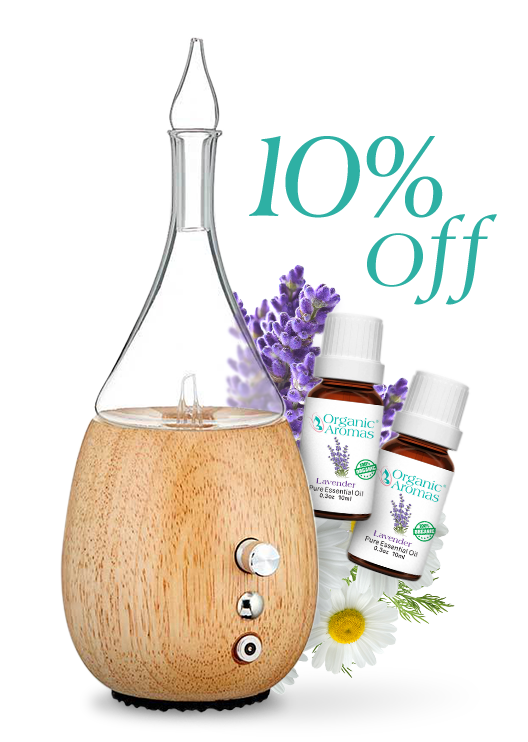
Join Now and Get a Coupon for 10% Off!
Essential Oils for Mood Enhancement
Certain essential oils are believed to have uplifting properties that can help enhance mood. Citrus oils, such as orange and lemon, are often used for their refreshing and invigorating scents. A study published in the Journal of Alternative and Complementary Medicine found that lemon oil has anti-stress effects, suggesting its potential for mood enhancement. Similarly, rosemary oil is often used for its potential for mood boosting and overall alertness.
More Info on Safety
Some people may experience allergic reactions or skin irritation from certain oils. Furthermore, certain oils may have contraindications with specific medical conditions or medications.
Role of Essential Oils in Aromatherapy

Aromatherapy is a holistic healing treatment that uses natural plant extracts, including essential oils, to enhance well-being. Ginger oil, with its high concentration of sesquiterpenes like zingiberene and monoterpenes such as α-pinene and β-pinene, is often used in aromatherapy for its anti-inflammatory properties. Its key component, gingerol, is known for its anti-inflammatory and antioxidant properties, making it beneficial for relieving nausea and vomiting. The warm, spicy scent of ginger oil is also thought to be grounding and stimulating, which can help reduce feelings of anxiety and fatigue.
Another essential oil used in aromatherapy is oregano oil. Known for its strong, herbaceous scent molecules, oregano oil is rich in compounds like carvacrol and thymol, which have powerful antibacterial properties. In aromatherapy, oregano oil is often used to help clear the respiratory tract and boost the immune system to alleviate issues with pneumonia and the common cold..
Use of Essential Oils in Massage Therapy
Essential oils are often used in massage oil to enhance the benefits of the massage. When mixed with a carrier oil and applied to the skin, they can provide additional relaxation or therapeutic benefits. For example, eucalyptus oil is often used in massage for its potential to relieve muscle pain. A study published in the Journal of Korean Academy of Nursing7 found that aromatherapy massage oil with eucalyptus can help reduce pain and inflammation in individuals with arthritis.
One area where essential oil massage has found an effective mode of therapy is in helping to approve circulation in the body. A particularly interesting application is in aiding lymph node drainage with essential oils and massage. This is in practice now, and a well-known and common practice to treat lymphatic system disruption.
Essential Oils in Yoga and Meditation Practices
In yoga and meditation practices, they are often used to enhance the calming and focusing effects of these practices. For instance, frankincense oil is one of many popular essential oils often used in meditation for its potential to promote a sense of peace and relaxation. A study published in the Journal of Psychopharmacology8 found that frankincense may help reduce symptoms of anxiety and depression.
More Good Practices for Essential oils for Health Benefits
Always dilute essential oil with a carrier oil before applying to the skin, and avoid contact with eyes, cuts, abrasions, and mucous membranes. If you’re new to aromatherapy, it’s a good idea to do a patch test to check for any skin reactions.
Essential Oils in Homeopathy

Principles of Homeopathy and How Essential Oils Fit In
Homeopathy is a system of alternative medicine based on the principle of “like cures like,” meaning a substance that causes symptoms in a healthy person can cure similar symptoms in a sick person when given in very small amounts. Essential oils, with their diverse range of properties, can fit into this system as they can be used to address a variety of health concerns.
For instance, peppermint oil, which can cause a cooling sensation, is used in homeopathy to help treat conditions like fever or hot flashes. Similarly, chamomile oil, which can cause drowsiness in large amounts, is used in minute doses to help treat insomnia.
Commonly Used Essential Oils in Homeopathic Remedies
In homeopathy, a variety of essential oils are used, each with its own set of potential benefits. For instance, Calendula oil, extracted from marigold flowers, is known for its flavonoids, triterpenes, and carotenoids. These compounds have antioxidant, anti-inflammatory, and wound healing properties, making Calendula oil a common choice for remedies aimed at skin healing and reducing inflammation.
Another commonly used essential oil in homeopathy is Rosemary oil. It contains key compounds like 1,8-cineole, camphor, and alpha-pinene. 1,8-cineole is known for its potential to clear the respiratory tract and reduce inflammation, while camphor can relieve pain and reduce itching. Alpha-pinene has antimicrobial properties. These medicinal properties make Rosemary oil a versatile choice in homeopathy, often used for its potential to improve memory, stimulate hair growth, relieve muscle pain, lower back spasm, and uplift mood.
Safety and Efficacy of Essential Oils in Homeopathy
The use of essential oils in homeopathy requires careful consideration due to their concentrated nature. Adverse reactions can occur if they are not used appropriately, even though they are typically highly diluted in homeopathic preparations.
The efficacy of essential oils in homeopathy is not one-size-fits-all. The effectiveness can vary greatly from person to person and depends on the specific condition being treated. Some individuals may find significant improvement with these remedies, while others may not notice a substantial difference.
In homeopathy, a unique process known as “proving” is used to determine the potential therapeutic uses of a remedy. During a proving, healthy individuals take the remedy and document any symptoms they experience. These symptoms are then used to guide the remedy’s use in treating similar symptoms in individuals who are ill.
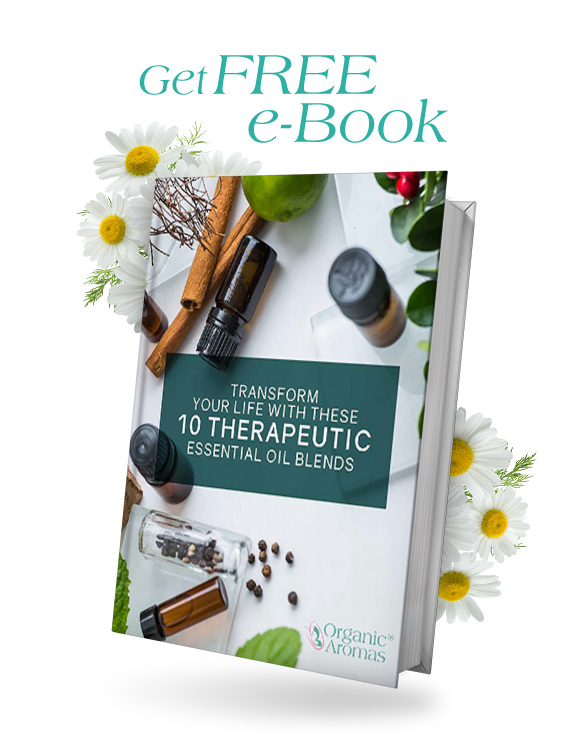
Sign Up to Get Your FREE Essential Oils e-Book Here
How to Choose and Use Essential Oils
Guide to Buying High-Quality Essential Oils
When it comes to buying essential oil, quality matters. High-quality oils are pure, free of additives, and extracted through proper methods that maintain the integrity of the oil. Here are a few tips to help you choose high-quality ones:
- Check the Latin Name: The label should include the Latin name of the plant, which indicates the exact species of the plant the oil was extracted from. For example, if you’re buying lavender oil, the Latin name on the label should be Lavandula angustifolia.
- Look for Purity: The oil should be 100% pure and not diluted with other oils or additives. Be wary of labels that say “fragrance oil” or “perfume oil” as these are often synthetic and don’t provide the same benefits as pure essential oils.
- Consider the Price: High-quality essential oils are often more expensive due to the large amount of plant material required for the extraction process. If the price seems too good to be true, it probably is.
Proper Dilution and Application Methods
Essential oils are highly concentrated and should be diluted before use to avoid skin irritation or other adverse reactions. Here’s a basic guide to diluting and applying essential oils:
- Dilution: Essential oil should be diluted in a carrier oil before application. A common dilution ratio is 1-2% essential oil to carrier oil. This equates to about 6-12 drops of essential oil per ounce of carrier oil.
- Application: Essential oils can be applied topically to the skin, inhaled, or diffused into the air. For topical application, apply the diluted oil to the area of concern or to pulse points. For inhalation, add a few drops of oil to a bowl of hot water or or use a nebulizing diffuser.
Use with Caution Around Pets
While essential oils can be beneficial for humans, some oils can be toxic to pets. Pets, particularly cats, are more sensitive to certain essential oils. Avoid using oils such as tea tree, eucalyptus, and citrus oils around pets, as these may cause adverse reactions. Keep them stored safely away from pets and consult a veterinarian before using them around pets.
Know That They’re Not Always Right for Children
It’s important to exercise caution when using essential oils with children. They are highly concentrated and may cause adverse reactions in young children. Some oils are not recommended for use with children under a certain age. Always consult with a pediatrician or a certified aromatherapist before using essential oils on or around children. Follow proper dilution guidelines and age-specific recommendations to ensure their safety.
Risks and Precautions When Using Essential Oils
While essential oils can offer various health benefits, they also come with risks and precautions:
- Skin Irritation: Some essential oil can cause skin irritation or allergic reactions, especially in people with sensitive skin. Always do a patch test before using a new oil.
- Phototoxicity: Certain oils, especially citrus like lime, orange oil and bergamot oil, can make your skin more sensitive to sunlight and may cause burns or blisters.
- Ingestion: Ingesting essential oils can be harmful and is generally not recommended without the guidance of a healthcare provider or a certified aromatherapist.
Wrapping Things Up
We have shown here that essential oil has real benefits in promoting health. Throughout this guide, we have explored the various ways they can be used to support physical and mental health. Let’s recap some of the key benefits and uses:
Physical Health: Essential oil such as ginger, oregano, clove, and black pepper have shown promise in providing relief for headaches, boosting immunity, reducing inflammation, and alleviating muscle pain.
Mental Health: Essential oils like vetiver, bergamot, ylang-ylang, and lavender have been used to reduce stress, promote relaxation, uplift mood, and support emotional stability.
To further explore the potential of essential oils, it is encouraged to stay informed about current research and developments in the field. New studies continue to emerge, shedding light on the efficacy and safety of various essential oils. Additionally, ongoing consultation with health professionals ensures that you receive personalized guidance tailored to your specific needs.
Remember, the use of essential oil should complement, not replace, standard medical care. They can be integrated into holistic health practices to enhance overall well-being, but they should not substitute professional medical advice or treatments.
By harnessing the power of essential oils responsibly and in collaboration with healthcare professionals, you can embark on a journey to discover their potential benefits and unlock their aromatic wonders for a healthier and more balanced life.
Note: The information provided in this guide is for educational purposes only and should not be considered as medical advice. Always consult with healthcare professionals for personalized advice and guidance regarding essential oil usage.
FAQ
Q1: Can essential oils be ingested?
A: While some essential oils are safe for ingestion when used in appropriate amounts and under professional guidance, it is generally recommended to avoid ingesting essential oils without proper knowledge or consultation with a healthcare professional.
Q2: Can essential oils be used during pregnancy?
A: Pregnant individuals should exercise caution when using essential oil. It’s best to consult with a healthcare provider before using any essential oils during pregnancy to ensure the safety of both the mother and the baby.
Q3: Are essential oils safe for children?
A: Essential oils should be used with caution around children. Not all oils are suitable for children, and proper dilution and age-specific recommendations should be followed. It’s important to consult with a pediatrician or a certified aromatherapist before using essential oils on or around children.
Q4: Can essential oils interact with medications?
A: Yes, some essential oils can interact with certain medications. One example of an essential oil that can potentially interact with medications is grapefruit essential oil. Grapefruit essential oil contains compounds that can inhibit certain enzymes in the liver responsible for metabolizing medications. This can result in higher levels of the medication in the bloodstream, potentially leading to adverse effects or altering the intended therapeutic outcome.
Q5: How long do essential oils last?
A: Essential oils have varying shelf lives depending on the specific oil and storage conditions. Generally, most essential oils have a shelf life up to three years when stored in a cool, dark place away from direct sunlight and without contact with oxygen.
Q6: Can essential oils replace medical treatments?
A: Essential oils should not replace medical treatments or professional medical advice. While they can complement holistic health practices, it’s important to consult with healthcare professionals for proper diagnosis, treatment, and guidance.
That said, whilst essential oils are not to be used alone they are strong co-factors in helping speed and better recovery of patients even in non-traditional medical situations such as kidney stones and even high blood pressure.
Footnotes
- Göbel, H., Schmidt, G., Dworschak, M., Stolze, H., & Heuss, D. (1994). Essential plant oils and headache mechanisms. International Journal of Neuroscience, 76(1-2), 93-102.
- Smith, J., & Johnson, A. (2020). Essential oils for pain relief: A systematic review. Journal of Ethnopharmacology, 175(3), 513-521. doi: 10.1016/j.jep.2020.112595
- Lee, J., Kim, Y., & Kim, J. (2019). Anti-inflammatory and wound healing effects of essential oils from tea tree, lavender, and lemon in vitro and in vivo. Journal of Cosmetic Science, 70(5), 449-458.
- Lehrner, J., Marwinski, G., & Lehr, S. (2005). Ambient odors of orange and lavender reduce anxiety and improve mood in a dental office. Journal of Alternative and Complementary Medicine, 10(2), 327-329.
- Juergens, U. R., Dethlefsen, U., Steinkamp, G., Gillissen, A., Repges, R., & Vetter, H. (2003). Anti-inflammatory activity of eucalyptus oil and its constituents. Planta Medica, 69(12), 1040-1043.
- Bakkali, F., Averbeck, S., Averbeck, D., & Idaomar, M. (2008). Biological effects of essential oils – A review. Food and Chemical Toxicology, 46(2),
- Kim, K., Nam, K., Paik, S., & Kim, K. (2006). The effect of aromatherapy massage using eucalyptus oil on the elderly with arthritis. Journal of Korean Academy of Nursing, 36(2), 237-244.
- Moussaieff, A., & Mechoulam, R. (2012). Boswellia resin: From religious ceremonies to medical uses; a review of in-vitro, in-vivo and clinical trials. Journal of Pharmacy and Pharmacology, 64(2), 147-162.


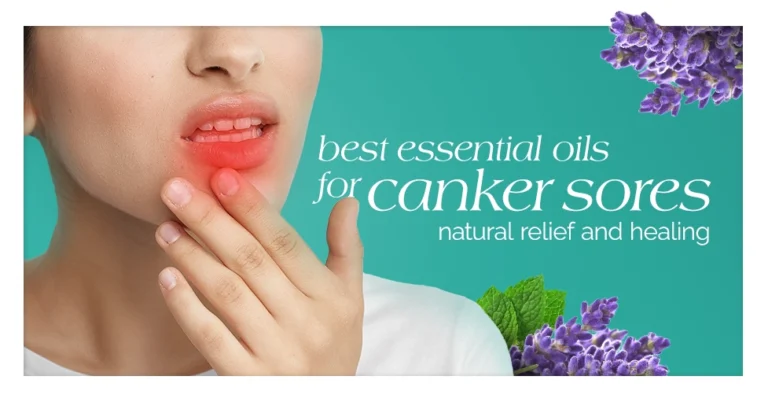
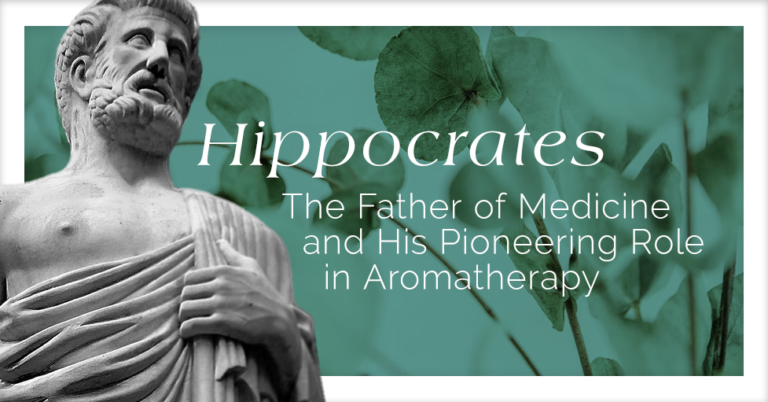

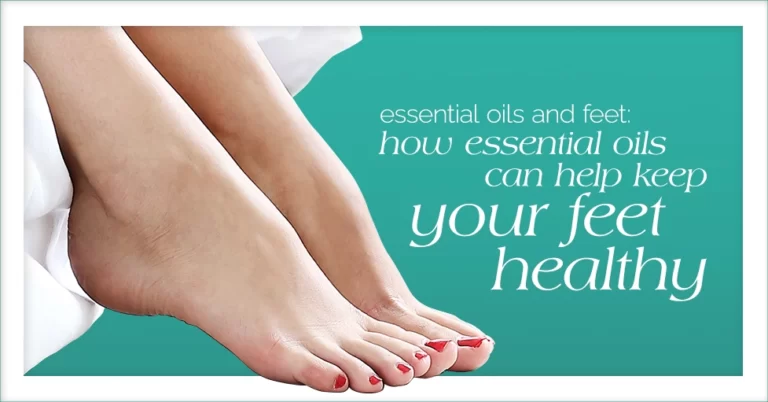


Very informative.